Daniel Montgomery is a creep.
Of course, that’s not an insult to him; it’s a compliment. For the last few years, he has been part of the JFI Productions team, helping to bring their incredible immersive shows to life not just though his acting skills, but also through his written words. While putting together CREEP LOS ANGELES and THE WILLOWS are definitely group efforts, it’s Montgomery’s scripts that take the concepts into fleshed-out creations.
“I was a super artsy kid,” he told me one dreadfully sunny Sunday afternoon in his apartment. “I was always drawing, and writing, and acting. I knew I wanted to do something in entertainment, like move to LA and be on TV,” he laughed. Both he and his twin brother, Matthew Scott Montgomery, had the entertainment gene ingrained in them at a young age. While originally from North Carolina, he attended USC for theater, and did, in his own words, an “insane amount of plays” while he was there.
“I was so in love with it,” he said. “After graduation, I got an agent, auditioned, and booked a lot of stuff. So, I guess it’s been going pretty well ever since!” And it clearly was, because even before I saw CREEP LOS ANGELES for the first time, I remember seeing his face on television myself!
After college, he formed a sketch group with some friends called Bowling For Tiffany. Though he hadn’t done much writing during school, by necessity, he started to write things for the group. He seemed to have a knack for it, and most of the group’s sketches came from him, and his friend Riley Rose Critchlow. Eventually, the group became just Critchlow and himself, so they formed a group of their own: Mary-Kate and Ashtray.
“I gave myself writing assignments, and wound up with over 100 sketches,” he said. He and Critchlow still perform together to this day, but he always saw that as something he did for fun, not as a career.
That was until Justin Fix, of JFI Productions, approached him in 2015 about a haunted house idea he had that would eventually become CREEP LOS ANGELES. The two had been friends for a long time, and Fix wanted Montgomery to work with him on it. The two developed the ideas of the show together, and again, out of necessity, Montgomery was the one who actually put pen to page.
“I found my voice in that process, and I really liked it,” Montgomery said.
Before CREEP, he hadn’t had much experience with immersive theater. In fact, the only show he had seen at that point was DELUSION. He knew he had a lot to learn, and every night, he said they had to figure out how to guide guests. However, his experiences going to places such as Universal Halloween Horror Nights helped shape the flow of the show.

A scene from last year’s LORE
“I always get stressed out by how many people are in those things. It’s a conga line, you miss scares, people are drunk, and you end up standing in a room for a long time, waiting for other people to move,” he said. He fought hard to get smaller groups for CREEP, to help everyone get some sort of personalization. He didn’t even know that sort of thing was possible at first, but thankfully, Fix was on board for it. Groups of 6 went in together, but then were also broken down into groups of two, so everyone would see different things and experience different characters.
“That tickled me!” Montgomery laughed. “What a novel idea!”
But the personalized experiences, and breaking people into smaller groups, wasn’t as difficult to accomplish, because he already had experience with that kind of thing with parties he would often throw with his brother.
“Every year, we’d throw the 13th Annual Constance’s Halloween Ball,” he told me. “It was always the 13th
Annual, no matter what. People would have to show up in character, one they created, and stay in character the entire time.” All of their actor friends would come as everything from a dead French maid to possessed dolls, and get really weird with it.
“We also had 90s movie nights, where we’d watch a movie and do an activity related to it. For The Bodyguard, since her son is kidnapped in the movie, we hid a photo of the son in our house, and using clues we planted, our friends would have to find it.”
He also told me that for his birthday one year, they had a horror scavenger hunt, and all his friends were split up.
“One friend was even looked in my room for an hour as part of it,” he told me. Obviously, this kind of thing lends itself naturally to CREEP. He loved crafting weird experiences, and it was almost like an immersive boot camp for him, without even realizing it. When they began to plan CREEP, all of these elements came together, and helped with his learning of how the process worked.
During the first year, they would have guests going in every ten minutes. However, he and Fix would try to meet between every group to quickly discuss how things were going.
“We’d find each other and literally be like ‘what works there? What didn’t? Let’s change it, let’s try this this time,” he said. It was this collaborative process that helped the show transform form opening night to closing and resulted in a much smoother run in the end. The process of giving notes every night even continues to this day, as the team would come together during THE WILLOWS after every show to discuss.
“Immersive theater is so dependent on guests, and you never know what to expect from them,” he told me. “We are constantly learning things and seeing what works here and what doesn’t work there. We want it to be good, so we are constantly adjusting things.”
And as a guest, that is evident to me. I have seen many of the JFI Production shows multiple times, and you can see a change in how the shows flow, for the better, every single time. They listen to, and observe, the audience, and oftentimes, Montgomery is writing and re-writing even after shows open.
“I like to believe it’s set once we start rehearsing, but that’s never the case,” he joked. In fact, when we spoke for this interview, the opening of CREEP’s third year was only a few weeks away, and he was still making adjustments on scenes that just weren’t working to his liking during rehearsal.
For the most part, though, the big details of a scene are set well before the rehearsal process, and it’s the smaller details that need to be worked out while they are in the space. For example, he spoke about the character of Jonathan in THE WILLOWS, the lone, dead figure in the house. In the story, he was known to have written a lot of poetry, and Mrs. Willows would receive a lot of questions from guests about them.
“Because Melinda DeKay, who played Mrs. Willows, is so phenomenal, she would deflect the question skillfully. But, one night, because she was getting the questions so much, I had to sit there and write some poems really quickly, with a bag over my head (he was playing the specter that wandered the house at the time), so Melinda would have them for the next show, just in case anyone asked,” Montgomery said. It fascinated him that he was crafting all of this back story for a character that isn’t really even present during the show itself.
As for the initial writing on THE WILLOWS, though, Montgomery claims the initial seed came from Fix’s mind.
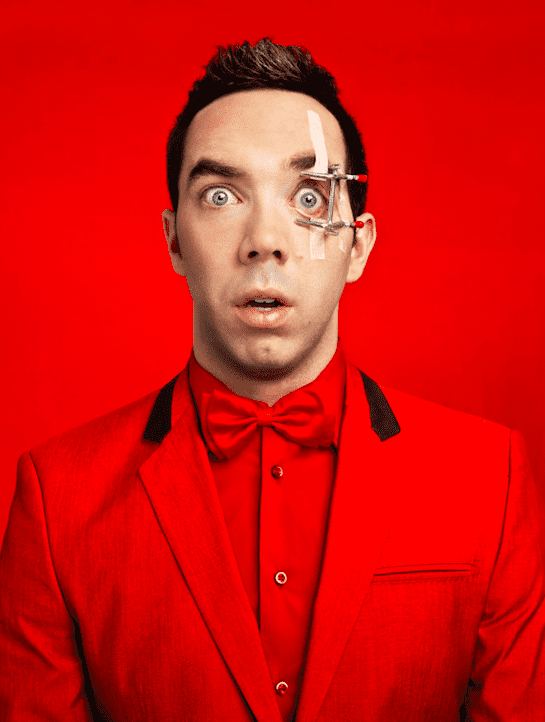
“He wanted to do a murder mystery dinner show, but with a twist. We had already done haunted houses with a twist with CREEP, and we wanted to see what else we could do with it,” he told me. I was surprised to learn that it wasn’t even supposed to be scary at first! They had used the classic film CLUE has a reference at first when they sat down to brainstorm some ideas. The team came up with potential plots and ideas before narrowing it down to just three that they thought would world. Naturally, the more they worked on it, the weirder and scarier the ideas became.
Once they landed on the idea of a weird family, Montgomery went off on his own to write it.
“I took those ideas, went home, turned on some music, and cranked out the initial script in, like, a day or two,” he said. “That is my writing process, I just have to get it out, on the paper, once the ideas are in my head. And sure, the story was developed more after that initial script, but we had the character archetypes we wanted and personality traits. We knew someone had died, and that we wanted a strong mother figure. We wanted a drunken, widowed spouse, a creepy, artsy kid, and a witchy girl. And once we found the house, the story and characters just clicked into place.”
Montgomery also explained that with their shows, the writing is also so location dependent as well.
“A lot of times, we are finding ourselves in a location that is not a traditional theater, but it’s a warehouse or a church or it’s a house and you really, really, really have to craft the show around that location. It’s difficult, for me, to write a show without knowing what the space feels like.”
This was especially challenging for him during last year’s production of CREEP, which was based on the Amazon series LORE.
“We went through ten different spaces. Seriously, ten! It was crazy, and every single time, I had to re-craft. I was losing my mind, but I had to make it fit in the space to make sense.”
Fortunately, he was able to translate some ideas over and just remap them out. He kept the elements that worked and worked around the others that no longer did.
“To me, I feel like a space speaks to you and has a certain feeling. I need it.”
With THE WILLOWS in particular, he literally had a map of the house next to him while writing. He thought about what parts of the house were interesting, which parts felt like certain characters in the story, what activities that would be doing there.
“There was a really weird room upstairs, and it was the owner’s son’s room,” he told me. “It felt very arts-and-craftsy, and sort of strange, and I thought, ‘Oh! This feels like a place for Conrad!’ And there was a beautiful dollhouse in the basement, and it clicked ‘Oh, this feels like Claudia!’”
One of the most challenging aspects of putting these shows together, though, is the timing. Crafting scenes that can happen simultaneously but last the same amount of time is incredibly difficult, but a skill I feel that Montgomery has honed quite nicely.
“I’ve gotten pretty good at writing scenes that will last the same, but most of it does come in rehearsal, too. Sometimes I’m cutting things or adding whole paragraphs on the fly to make the timing work out.”
However, he also credits the actors for helping in this as well.
“They get to know the characters so well, and the scenes so well, that they can stall or speed it up,” he said. “That’s part of the reason we cast many of the same people, because they can easily vamp it up if needed.”
To me, last year’s LORE show was a real triumph, because I was amazed how close to the source material they were able to be, while also putting the unique CREEP staples in place as well. Part of the reason of that was Montgomery was already working on a CREEP script that was very close in tone and style to that of LORE.
“Amazon reached out to us pretty late in the summer, after we had already begun working on our fall show,” he said. “We had already been in the process of auditions! But, they reached out, and said we had free reign to put our own spin on things. They had final sign off, of course, but they wanted us to know that it was okay to be our own show.”
Montgomery was already a fan of the podcast on which the Amazon series was based, so he had a leg up on knowing what an immersive experience based on it might entail.
“We were given access to the scripts for the show, but only for 30 minutes. Total. So they locked us in a room, and each of us grabbed a script, quickly read it and took notes before the time was up,” he laughed. “We even saw a rough cut of one of the episodes, but that was all we were given. It was a bit of a challenge at first, but because I was so familiar with the podcast, too, I was able to pull from that on the same subjects. It didn’t end up being as constricting as I thought.”

THE WILLOWS
They took the stuff that really resonated with them, and even pulled from things that were just smaller aspects of the coming episodes. For example, the Bunnyman story, a Halloween myth, was just a tiny part of one, but they were able to make it a larger aspect of their show.
“We went with what was kind of an amazing blessing in that the show we had already been working on felt very similar in tone,” he said. “We were able to pull some of the elements and mold it into the LORE universe.”
Montgomery took all the information and ideas they had, drove to his parent’s house, and locked himself in a room for a day and half before emerging with a script that leaned more into what lore, and the stories we tell, actually is.
Surprisingly enough, the studio returned the script with only one note; the logo on the title page wasn’t right.
“That was kind of awesome,” he laughed. “I couldn’t believe it was that easy!”
One of the things that the JFI Productions shows excel at, which we touched upon earlier, is how guests can get vastly different stories depending on where in the experience they are.
“In terms of explaining, I don’t like to give the good guests too much,” he said. “I like for them to figure it out for themselves. Justin likes to spell certain things out, but we reach a good balance of what we reveal and what we don’t to people.”
For many of their shows, guests are on different tracks. So, while the basic story is still the same across the board, people will get different scenes, and bits of pieces of that.
“We want everyone to have an impactful experience,” he said. “Whether it’s a secret revealed, or someone has to do something physically, we want everyone to have their own story. Not everyone will get the big secret, but maybe just one person will. My brain, somehow, naturally splits them up that way.”
In this year’s CREEP, called AWAKE, Montgomery tells me that only two people out of every show (which only holds 25) will get it all laid out for them.
“Not that it’s a big mystery or anything, but what I want people to experience at that same time is very different and would like to think both are exciting enough for discussion after the show.” He’s conscious that, if one scene has a big jump scare feel, he wants to balance that feeling for folks who may not be in that scene as well.
This was especially true in THE WILLOWS, where there were two endings: one that rest of the guests got, and then an extra 10-minute coda that a single audience member would see.
Montgomery often finds himself writing for roles for specific actors and actresses they have worked with in the past. Misha Reeves, one of Montgomery’s friends that he has known since high school, is a perfect example of that.
“She’s been in every single show. She’s so good with the guests, and she got it right away. This year, I wrote something specifically for her in CREEP.”
While they do welcome new actors into the CREEP family, it is easier, at times, to re-use the same folks, because they already understand how the shows work and how guest flow goes. It also helps if they understand Montgomery’s twisted sense of humor, as well.
“It’s fun to write for their voices,” Montgomery says of the returning actors and actresses. “It’s so valuable to get new people in, too, but also to reuse so I can write for their strengths and give them something fun to do.”
Earlier this year, THE WILLOWS was translated to virtual reality by AmazeVR, and with that, came some unique new challenges that Montgomery hadn’t thought of before.
“It was the hardest thing I had ever done!” he said. “I had to do a lot of re-writing.” THE WILLOWS is a show based on heavy interaction, where the audience is given almost free reign to live life in the house and explore the family. However, in VR, the viewer had to take on a much more passive role.
“I was very strict on not wanting any of the guests do or say anything that the VR viewer could not,” he said. “So that meant no eating dinner, no making masks with Conrad, no moving around the house, and so on.” He had to re-write the entire script and re-adjust every single scene so it would make sense in VR. After doing the show for over a year, it was hard for him to veer in this new direction, but it was fun to do.
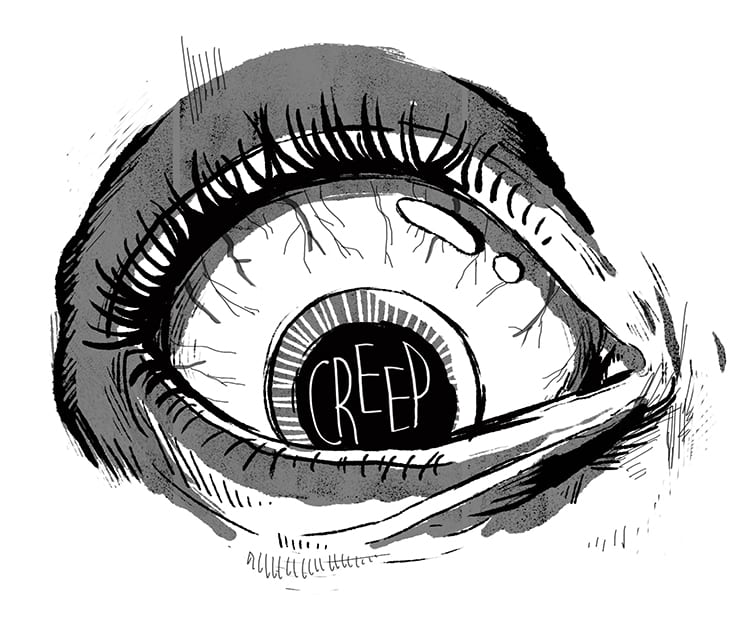
This year’s show, AWAKE, is now playing
“And it came together quickly…we closed the show on a Sunday, and we filmed the next Monday, Tuesday, Wednesday. And it was supposed to come out in November, and it’s already been out for months!”
As someone who has seen both the original, immersive version of the show and the VR version, I can say that it translates quite nicely. It’s almost a whole new experience, and one which I highly recommend if you have a VR headset.
But while Montgomery considers acting his full-time job, this writing thing has extended beyond just comedy sketches and immersive shows. He worked on a Disney show last year based on his writing chops, showing that his hobby isn’t just a hobby at all.
“I was hired by a friend, because of my sketch comedy writing, and it was great. But of course, when the Halloween episode come around, I felt like I was right back in my wheelhouse again!” he laughed.
His beginnings writing comedy definitely help with the spooky stuff, too.
“We know in comedy that laughs come in threes, and I’ve learned that screams come in threes as well,” he said. “They complement each other, even when writing humor, but innate creepiness comes out, as well, and vice versa. I love finding that balance that lives between both worlds.”
A big thank you to Daniel for taking the time to chat with me for this article. You can hear him and his twin brother, Matthew, on WELCOME TO DEADCAST, an awesome podcast where they have been talking about the Goosebumps books that shaped their childhood. Give them a listen on iTunes or where ever you listen to podcasts.
I also highly recommend you see his writing in action for yourself at this year’s CREEP LOS ANGELES show, AWAKE, which is now playing. Tickets are on sale at http://www.creepla.com/
One Comment
Leave A Comment
You must be logged in to post a comment.

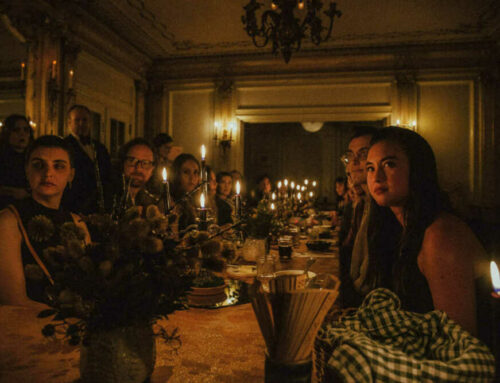

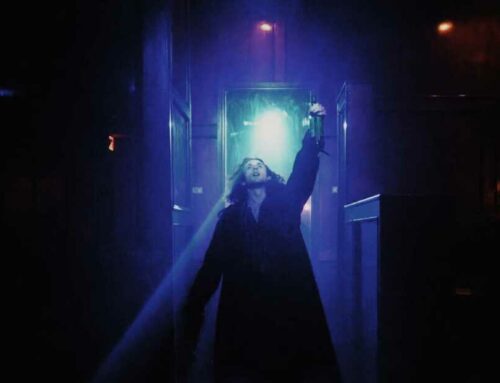
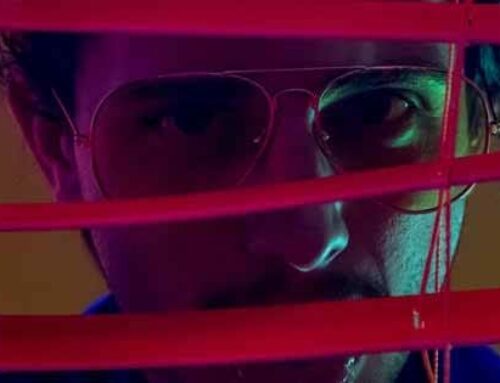

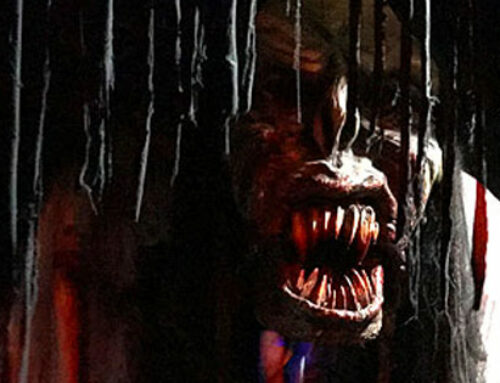

Great interview Jeff.